
G/T for Yagis VE7BQH's article in Dubus 1/1996:

To celebrate the 100st issue of the 144 MHz G/T Table I did a short interview
with the man himself, Mr. Edwards for our readers ...
• What made you start the G/T Tables?
I got a hold of Yagi Analysis by SM2IEV 3.5x ending with 3.54. This was the first software that calculated G/T at least for layman.
Up to that point I could only read DJ9BV's articles with interest. I did some early charts and Rainer encouraged me to write an article
for DUBUS. He had a hidden agenda I think as he was getting the usual push back that G/T was irrelevant, I am sure he thought if somebody
else published a G/T article it would cause people to pause and think. DUBUS 1/1996 happened and yes, people did start to come around.
• What made you get the EME bug?
Here in this part of the world we are isolated from much VHF/UHF activity. All I could do is DX on 148.33 FM! I then tried Meteor Scatter
but quickly ran out stations at about 12. Now what? Let's try EME and so I did.
• When did you do your first EME QSO?
W1FZJ/KP4 Nov 28, 1969 He had a 100' square dish fixed looking straight up with a moveable feed point. I had a pair of 16 el Cushcraft collinears
propped up on the car port. And so it began! And so the antenna grew.
• How does your family cope with this kind of hobby?
I found the best thing to do was not ask. What you do not know will not hurt you! The children were not allowed in the shack as the 50 amp Variac
was not covered. Need a little more voltage? No problem just turn the wheel!
See you at issue 200 in 2116
Lionel
Thank you!
See you at issue 200 in 2116
Lionel
To celebrate the 100st issue of the 144 MHz G/T Table the Dubus Magazine has given me the
permission to bring the very article online that was the starting signal for this outstanding works.
Link to the Dubus Magazine
As a forword to Lionel's article I permit myself to cite from my article
"Notes on VHF/UHF Antenna G/T", Dubus 2/2012 & Dubus Technik XII
'In a classical sense G/T is a signal-to-noise ratio derived at by division of antenna gain and the receiving systems noise
temperature. Since it includes the complete system noise temperature, it is specified as G/TSystem. In it amplifications
and losses of the single stages are combined with their equivalent noise temperatures.
If we want to see what the signal to noise ratio of the antenna can offer us as a function of its directivity and environmental noise pick up, we can define G/T at the antenna feed point. It is specified as G/Tant. It is practical to express it using the Antenna Gain in dB. Antenna G/T is commonly indexed as G(dB) / Tant.
Let me close with a final word taken from DJ9BV in [4]:
Antenna developers and weak signal enthusiasts need a benchmark for Antenna G/T which we find in Lionel Edwards G/T Table. He motivated the use of that figure of merit in his article “G/T for Yagis” in Dubus 1/1996 and for good reasons it is as effective as ever though going into its 16th year.'
If we want to see what the signal to noise ratio of the antenna can offer us as a function of its directivity and environmental noise pick up, we can define G/T at the antenna feed point. It is specified as G/Tant. It is practical to express it using the Antenna Gain in dB. Antenna G/T is commonly indexed as G(dB) / Tant.
Let me close with a final word taken from DJ9BV in [4]:
“The derived measure of G/T-ratio is a very suitable quality feature to compare different yagi constructions and different stacking
schemes for their value for EME-applications.” (Effective Noise Temperature of 4-Yagi-Arrays for 432 MHz EME, Dubus-magazine 4/87)
Antenna developers and weak signal enthusiasts need a benchmark for Antenna G/T which we find in Lionel Edwards G/T Table. He motivated the use of that figure of merit in his article “G/T for Yagis” in Dubus 1/1996 and for good reasons it is as effective as ever though going into its 16th year.'
Now the article:
Please excuse the quality of the images, 1996 was before the PDF format was available
so we have do with a scan ...

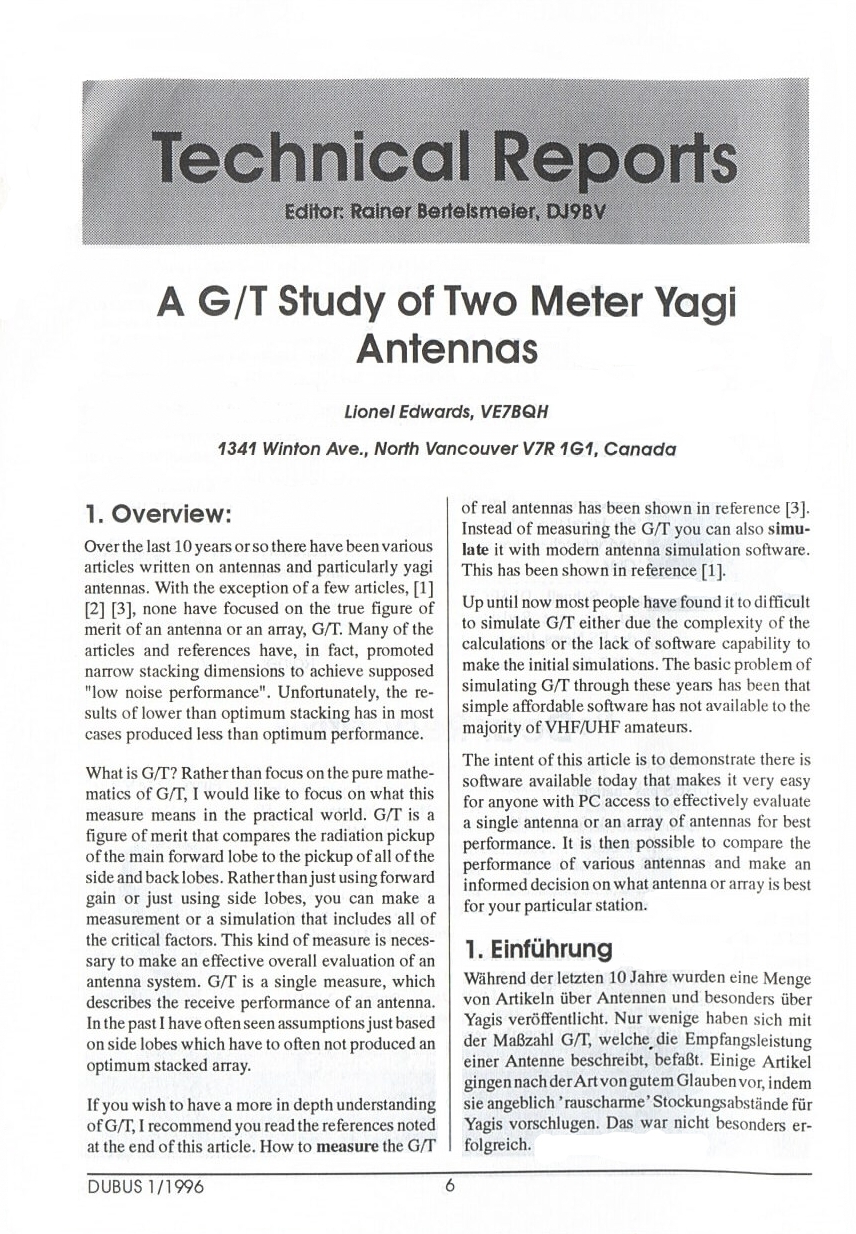

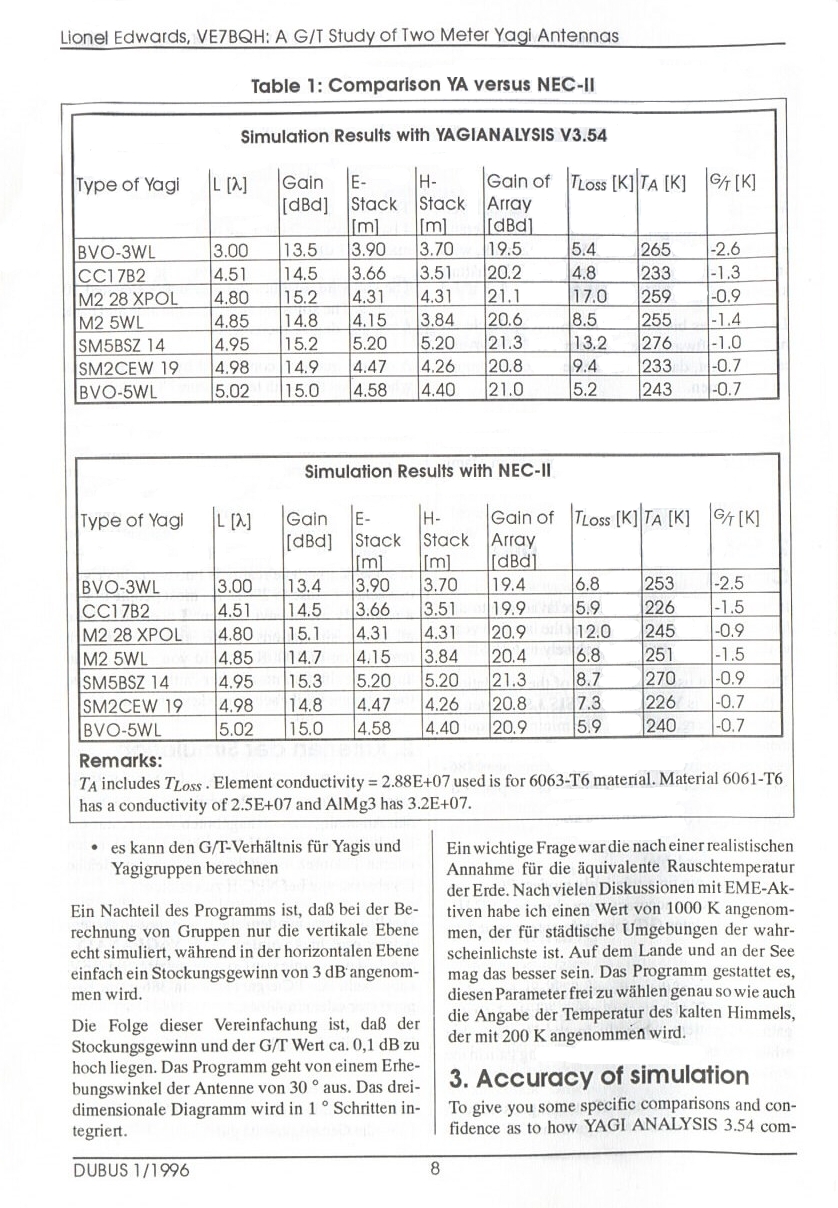

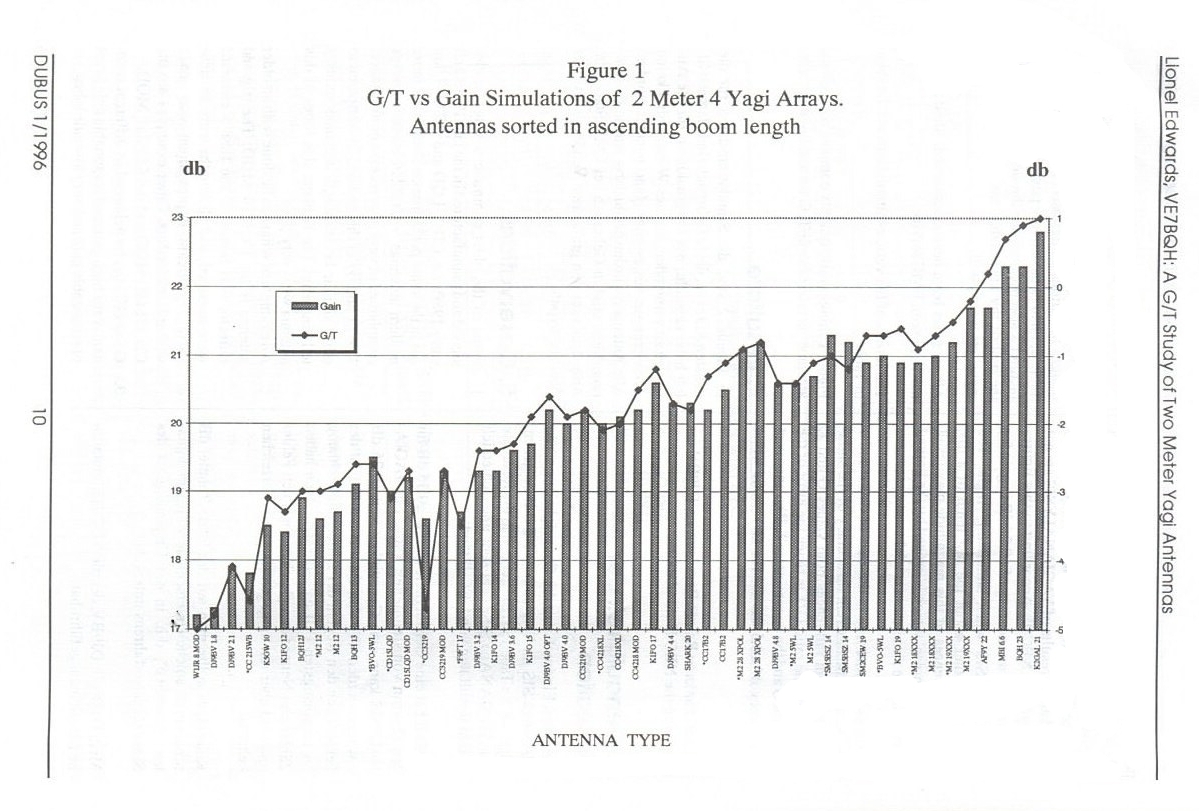
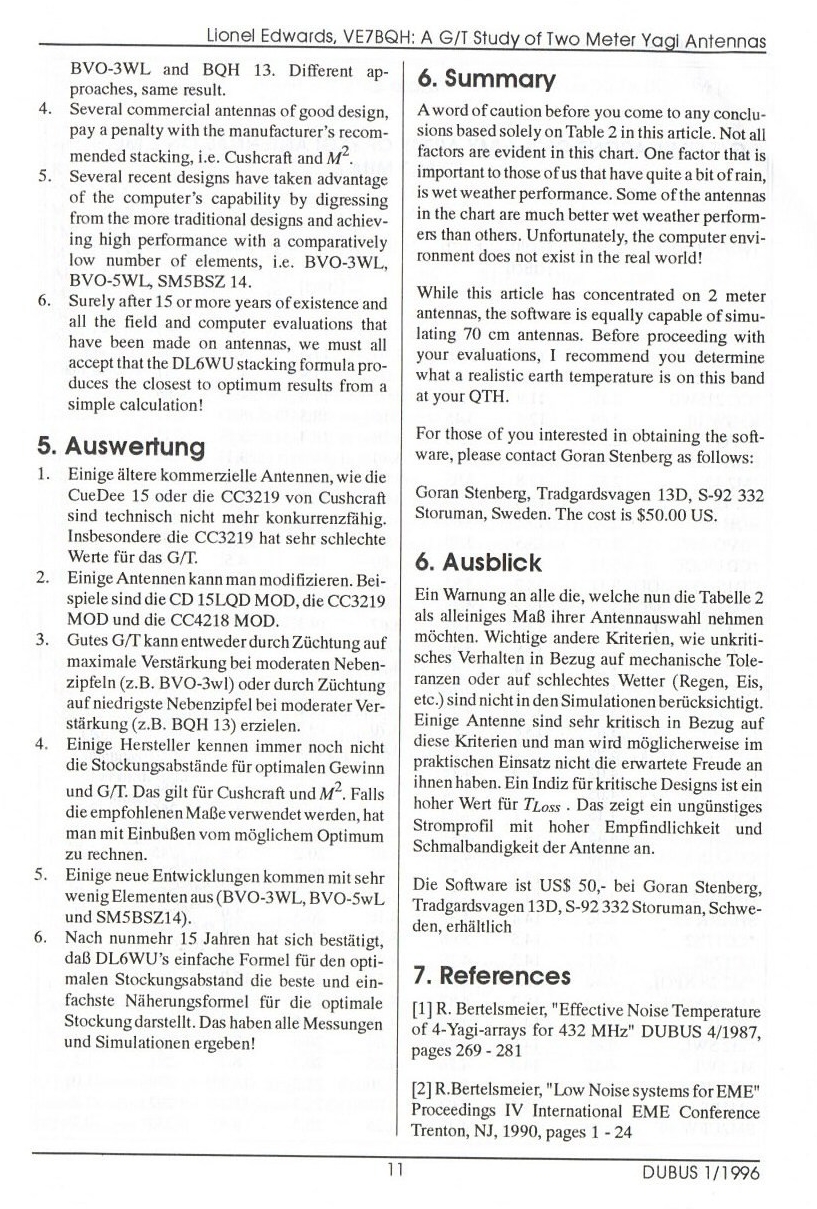
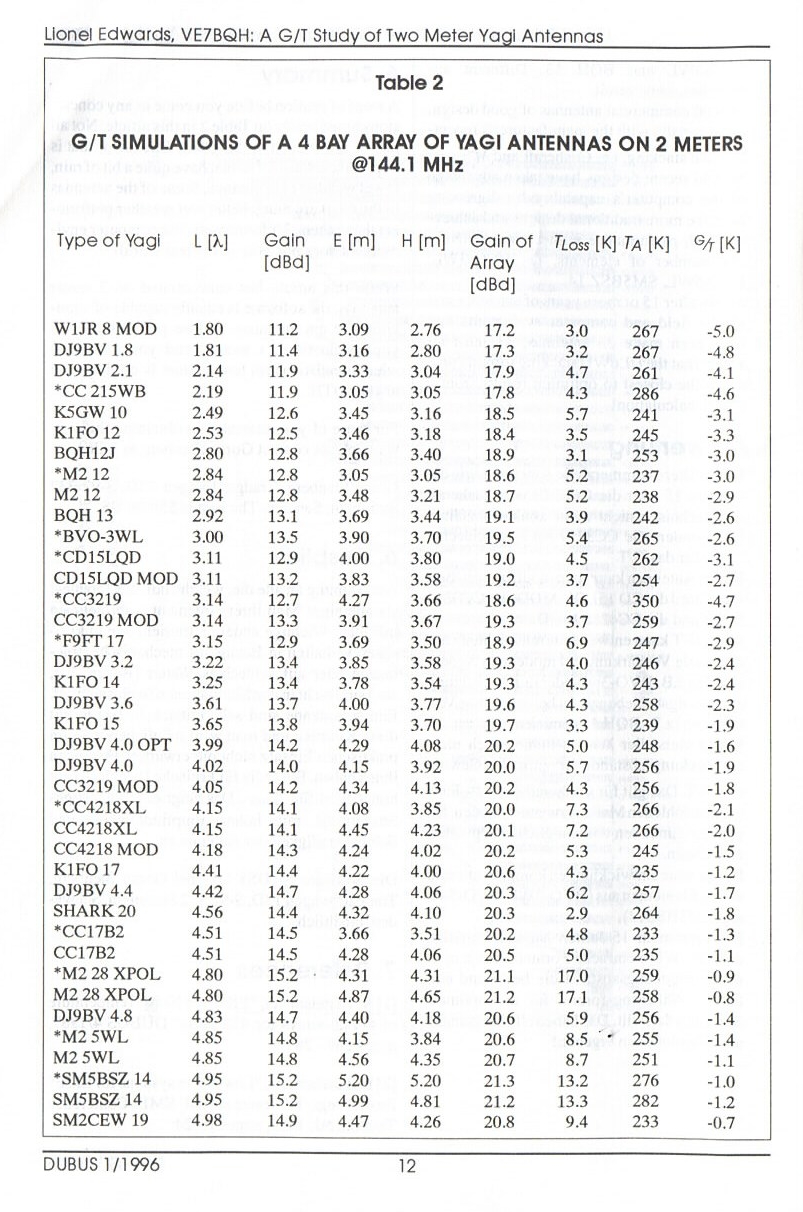
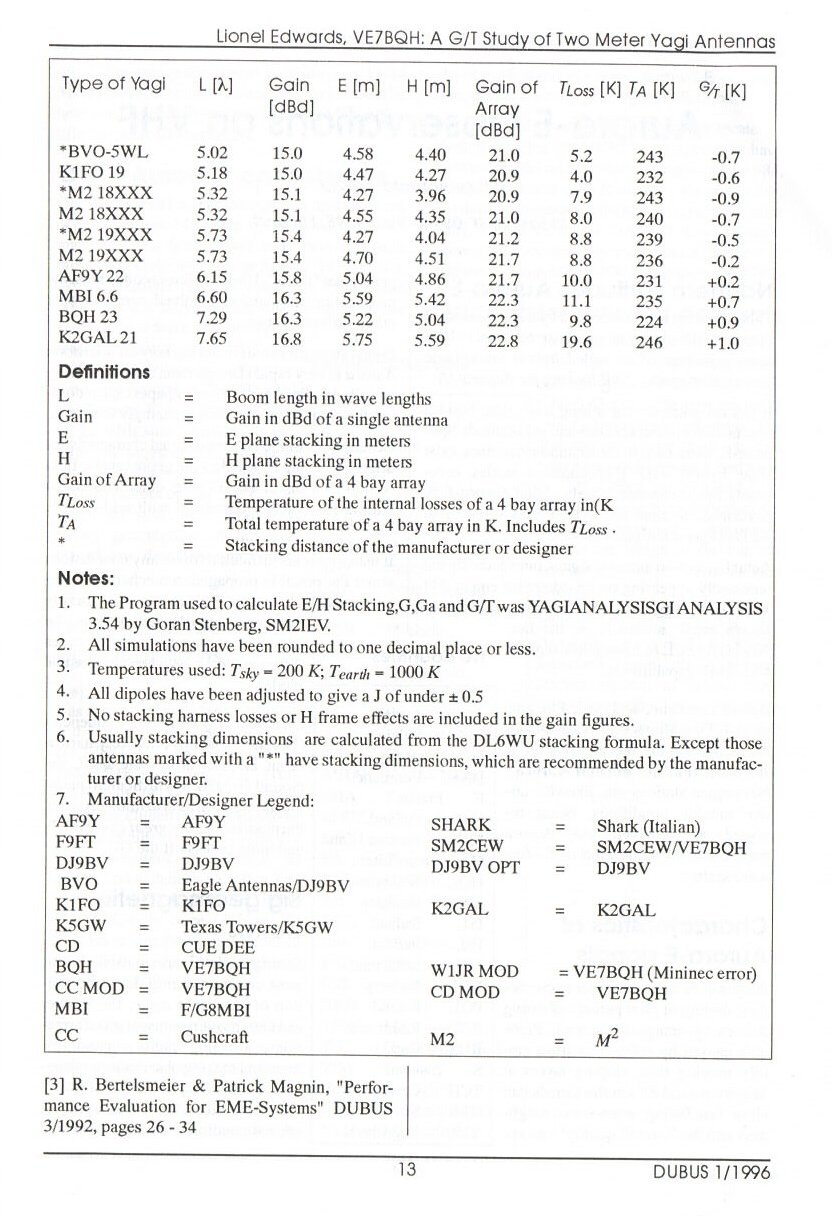
73, Hartmut, DG7YBN